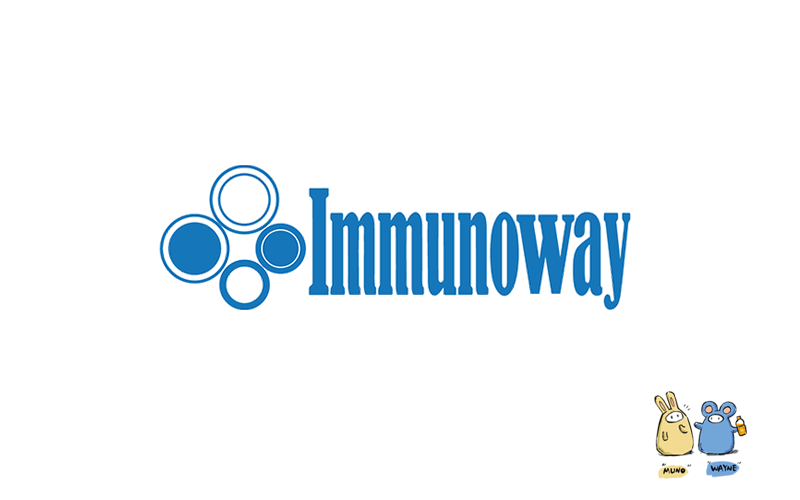
Catalog: YN0641
Size
Price
Status
Qty.
200μL
$450.00
In stock
0
100μL
$280.00
In stock
0
40μL
$150.00
In stock
0
Add to cart


Collected


Collect
Main Information
Target
DSG4
Host Species
Rabbit
Reactivity
Human, Mouse, Rat
Applications
WB, ELISA
MW
114kD (Observed)
Conjugate/Modification
Unmodified
Detailed Information
Recommended Dilution Ratio
WB 1:500-2000; ELISA 1:5000-20000
Formulation
Liquid in PBS containing 50% glycerol,0.5% BSA and 0.02% sodium azide.
Specificity
DSG4 Polyclonal Antibody detects endogenous levels of protein.
Purification
The antibody was affinity-purified from rabbit antiserum by affinity-chromatography using epitope-specific immunogen.
Storage
-15°C to -25°C/1 year(Do not lower than -25°C)
Concentration
1 mg/ml
MW(Observed)
114kD
Modification
Unmodified
Clonality
Polyclonal
Isotype
IgG
Related Products
Antigen&Target Information
Immunogen:
Synthesized peptide derived from part region of human protein
show all
Specificity:
DSG4 Polyclonal Antibody detects endogenous levels of protein.
show all
Gene Name:
DSG4 CDHF13
show all
Protein Name:
Desmoglein-4 (Cadherin family member 13)
show all
Background:
This gene encodes a member of the desmoglein subgroup of desmosomal cadherins. The encoded preproprotein is proteolytically processed to generate the mature protein. This protein is a transmembrane component of desmosomes and may play a role in cell-cell adhesion in epithelial cells. Mutations in the gene are associated with localized autosomal recessive hypotrichosis and monilethrix, characterized by impaired hair growth. [provided by RefSeq, May 2016],
show all
Function:
Disease:Defects in DSG4 are the cause of localized autosomal hypotrichosis (LAH) [MIM:607903]. LAH is an autosomal recessive skin disorder. Affected members displayed hypotrichosis restricted to the scalp, chest, arms and legs. It is characterized by abnormal hair follicles and shafts, which are thin and atrophic.,Disease:DSG4 is one of the target molecules recognized by autoantibodies in patients with pemphigus vulgaris. Pemphigus vulgaris is a potentially lethal skin disease in which epidermal blisters occur as the result of the loss of cell-cell adhesion.,Domain:Calcium may be bound by the cadherin-like repeats .,Function:Component of intercellular desmosome junctions. Involved in the interaction of plaque proteins and intermediate filaments mediating cell-cell adhesion. Coordinates the transition from proliferation to differentiation in hair follicle keratinocytes.,similarity:Contains 4 cadherin domains.,tissue specificity:Highly expressed in skin, testis and prostate; less in salivary gland. In scalp follicles, present in the inner rooth sheath (IRS) and all layers of the matrix and precortex.,
show all
Cellular Localization:
Cell membrane ; Single-pass type I membrane protein . Cell junction, desmosome .
show all
Tissue Expression:
Highly expressed in skin, testis and prostate; less in salivary gland. In scalp follicles, present in the inner root sheath (IRS) and all layers of the matrix and precortex.
show all
Reference Citation({{totalcount}})
Catalog: YN0641
Size
Price
Status
Qty.
200μL
$450.00
In stock
0
100μL
$280.00
In stock
0
40μL
$150.00
In stock
0
Add to cart


Collected


Collect
Recently Viewed Products
Clear allPRODUCTS
CUSTOMIZED
ABOUT US
Toggle night Mode
{{pinfoXq.title || ''}}
Catalog: {{pinfoXq.catalog || ''}}
Filter:
All
{{item.name}}
{{pinfo.title}}
-{{pinfo.catalog}}
Main Information
Target
{{pinfo.target}}
Reactivity
{{pinfo.react}}
Applications
{{pinfo.applicat}}
Conjugate/Modification
{{pinfo.coupling}}/{{pinfo.modific}}
MW (kDa)
{{pinfo.mwcalc}}
Host Species
{{pinfo.hostspec}}
Isotype
{{pinfo.isotype}}
Product {{index}}/{{pcount}}
Prev
Next
{{pvTitle}}
Scroll wheel zooms the picture
{{pvDescr}}



















